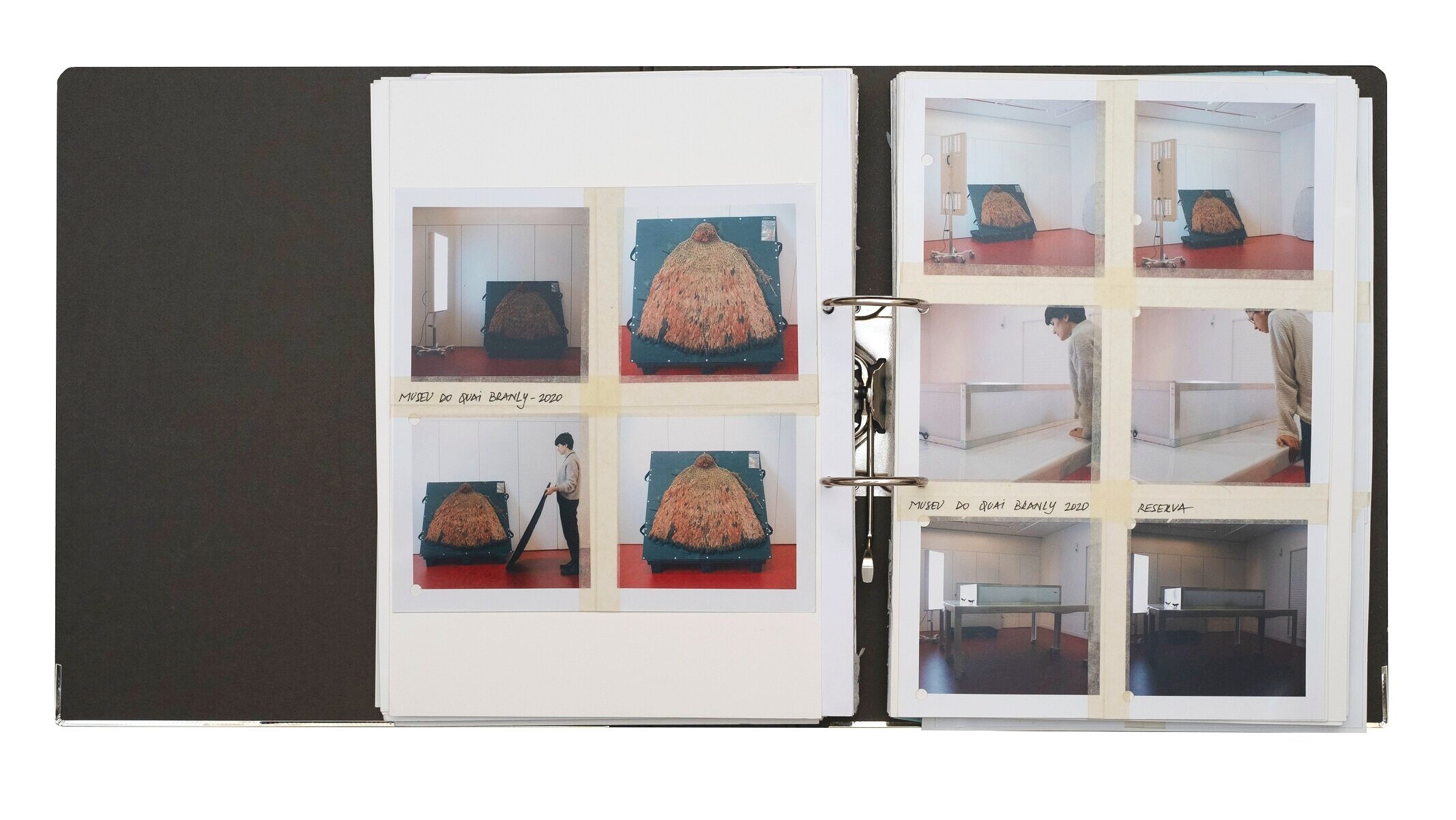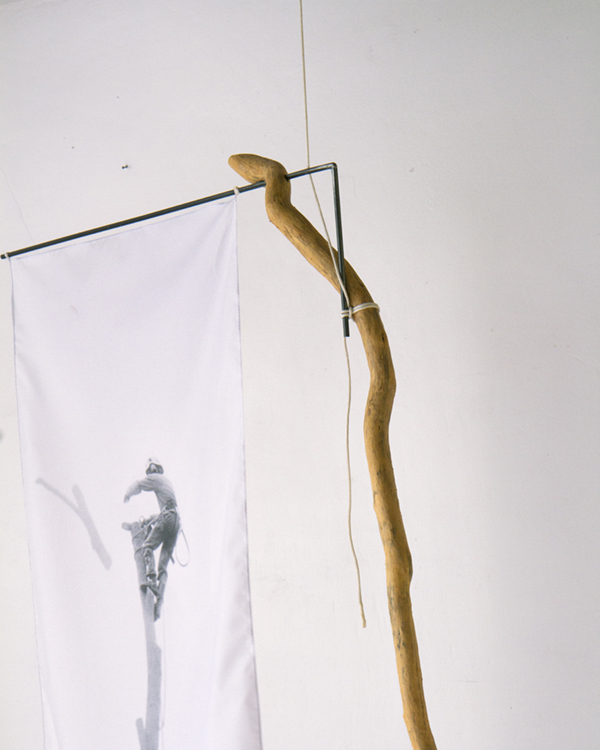Prix Fondation Pernod Ricard 2021

Image: View of Boris Kundi's works at the "Bonaventure (Trafiquer les mondes)" exhibition,
Fondation Pernod Ricard, 2021. © Thomas Lannes, courtesy of Fondation Pernod Ricard.
ART
Boris Kurdi
Prix Fondation Pernod Ricard
Born in 1990, Boris Kurdi studied philosophy before graduating from the Beaux-Arts Paris, his work is familiar to places of artists such as Bagnoler (Bagnolet) or DOC!, where he has his studio. His graphic work, which can extend to painting and sculpture, draws on the freedom of drawing to open the imagination with few means. Lover of typographical characters and numbers, to which he can attribute an erotic dimension (by covering them with hair or nipples), he exhibits at the Fondation Pernod Ricard the number 1 transformed into a metal sculpture made at his size. Added to this is a large panoramic drawing depicting what looks like a burrow, a subway map, an aquarium: borrowing from the principle of the landscape orientation panel, the artist seeks to disorient.
About the Prix Fondation Pernod Ricard
Geumgwan Order of Cultural Merit

Image: Park Seo-Bo, Ecriture(描法)No.150921, 2015.
Acrylic with Hanji Korean paper on canvas, 130 x 90 cm.
ART
Park Seo-Bo
Geumgwan Order of Cultural Merit
Abstract artist Park Seo-Bo received the Geumgwan Order of Cultural Merit, South Korea’s highest cultural honor, for his contributions to Korean art. Through a laborious practice of mark-making, he pursues balance, harmony, self-cultivation and self-discipline values that provided the philosophical foundation for Korea’s Dansaekhwa (monochrome painting) movement in the late 1960s. His enduring Ecriture (1966 -) painting series embodies the essence of Dansaekhwa in its translation of meditation to material form through simple and repetitive gestures, marks and actions. The series evolved from early canvases of graphite marks scratched onto wet, white oil paint to later works that feature colorful vertical columns and hanji, traditional Korean paper handmade from mulberry bark.
About the Geumgwan Order of Cultural Merit
Salon de Montrouge 2021

Image: Lívia Melzi, research notebooks, "Étude pour un monument Tupinambá", 2018-2021.
ART
Lívia Melzi
Grand Prix du Salon-Palais de Tokyo
Born in Ribeirão Preto (São Paulo, Brazil) in 1985, Lívia Melzi graduated from a Masters in photography at the Université Paris 8 after having been a resident at the École nationale supérieure de la photographie (ENSP Arles). Through the medium of photography, she reveals the networks of circulation of art objects. "Étude pour un monument Tupinambá" follows the sinuous story of cloaks made of sacred feathers, worn by the indigenous Tupinambá tribe in cannibalistic rituals. Usurped by European settlers, who regarded them as exotic gifts, these coats are now kept in European ethnographic museums where the artist has photographed them. She points to the mechanisms of domination and restitution around these objects whose symbolism feeds the imagination of "savagery" and of which no copy remains in Brazil.
Wolfgang Hahn prize 2022

Image: Frank Bowling, Flogging the Dead Donkey, 2020.
Acrylic and acrylic gel on canvas with marouflage, 102.5 x 185.5 x 5 cm.
ART
Frank Bowling
Wolfgang Hahn Prize
Frank Bowling is the 2022 winner of the Wolfgang Hahn Prize, which is administered annually by the Museum Ludwig in Cologne. Over six decades, the Guyanese-British artist, has created a visual vocabulary defined by monochromatic fields of colors. His paintings borrow from American abstraction and the British landscape tradition to tell personal narratives and global histories. The title Flogging the Dead Donkey, for example, is an ironic commentary by Bowling on the relentless efforts of contemporary artists to reinvent monochrome painting, as if in doing so, they were whipping a dead donkey. Coursing through much of his work is an interest in colonialism and global diasporas.
Résidence ADAGP x
Cité internationale des arts 2021

Image: Pauline Toyer, Corda, 2021.
Print on fabric, branch, metal, rope, bar tape, 90 x 120 x 15 cm.
ART
Pauline Toyer
Résidence ADAGP x Cité internationale des arts
Pauline Toyer was chosen to integrate for three month, from January to March 2022, the Cité internationale des arts in Paris. Born in 1987 and based in Loir-et-Cher, Pauline Toyer is a graduate of the École nationale supérieure d’art in Bourges. She has participated in several personal and group exhibitions. Her work revolves mainly around "living sculptures" made of entangled materials, often organic, vegetable, mineral, sometimes from recycling. Inspired by the philosophy of Héraclite, Pauline Toyer questions the relationship to time of a work of art through the phenomena of decay or oxidation, by borrowing from the worlds of furniture, machines and architecture to bring out hybrid creations, often exhibited outdoors, subject to weather variations.
About the Résidence ADAGP x Cité internationale des arts
Grosvenor Sustainability Award 2021

Image: Stephen Webster, The Last Straw, silver.
DESIGN
Stephen Webster
Grosvenor Sustainability Award
British jeweler, Stephen Webster has won the inaugural Grosvenor Sustainability Award. Stephen Webster was among the first British jewelers to receive a Fairtrade gold license more than a decade ago and has since then been spearheading a number of sustainability initiatives. He has introduced a service called Reset, where customers are able to bring in old jewelry for Webster and his team to redesign, and has also been seeing success with his Last Straw initiative. He created the sterling silver straw as a statement against the use of plastic straws, with a portion of proceeds from the sales going to Plastic Oceans, a charity that wants to end plastic pollution.




